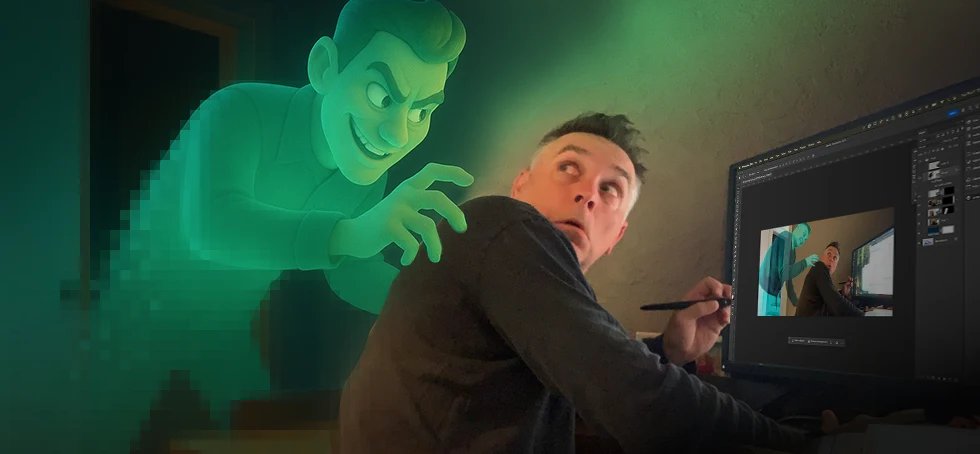They say that every creative leap forward started with a tool.
The pencil. The camera. The paintbrush. The mouse. Photoshop. Each one unlocked new possibilities. Each one promised to make things easier, faster, better.
I’m showing my age, but I remember using Photoshop before layers and with only a few undos. Back then, I relied on my Wacom tablet to manually select and separate subjects in an image. Now, that’s done with a single click. So I’m no stranger to evolving technology—or adapting to new tools and improvements.
So when people say, “AI is just another tool,” I get it. On the surface, it feels true.
But deep down in my imaginative bones, something about this feels different.
AI doesn’t just help create. It generates. It doesn’t just enhance a process—it often replaces it. You can now prompt a logo, a headline, a video concept, or even a fully rendered illustration with nothing more than a few words. For some, it’s exciting. For others (especially those of us who’ve put years into developing a craft), it’s uncomfortable.
At times, it feels like I’m battling myself—like I’m taking work out of my own hands.
I’ve seen what these tools can do. I even use them myself, especially in the early phases of the creative process—ideation, rough concepting, even focus group-style testing. Heck, I even used it to help organize my thoughts for this article. There’s a huge upside when it comes to speed and iteration. But here’s the part I wrestle with: AI might allow you to skip the steps, but it can’t replace the knowledge of those steps.
That’s the danger.
You can prompt your way to a pretty solid layout, but if you don’t understand the fundamentals—composition, hierarchy, how the eye moves through a page—you’re just mimicking. Same with photography. If you don’t know lighting, exposure, or lens distortion, your AI-generated “shot” might look okay, but it’s not going to say anything. There’s no voice, no perspective, no meaning.
Now, it’s possible to balance things here. In some way, that might be exactly the type of creative who will flourish in our new AI-addled world: the ones who can do both. They’ve got the foundational knowledge, and now they’re learning how to talk to the machines. They know how to prompt better because they know what they’re trying to say. That’s the new sweet spot.
I’m also an illustrator. And seeing AI image tools replicate styles like mine in seconds is tough to watch. Especially when those tools are trained on the work of real artists without permission. It’s not just about feeling left behind. It’s about losing something that used to be yours.
And yeah, it’s tough not to worry. Will clients still pay for hand-drawn, handcrafted, human-made? Or will “good enough” be good enough because it’s faster and cheaper? Will the future of visual storytelling be dominated by sameness?
I’m optimistic.
I believe there will always be value in the human touch—the brushstroke, the nuance, the intent behind the creation. But it might become niche. Like vinyl records or film photography. Or, it could become luxurious. Like a handmade meal at a Michelin star restaurant. Ultimately, it’s something we creatives need to talk about and shape where we can.
So is AI just another tool?
Well, the jury’s still out. I hope so. I hope we can use it to improve the creative process, not replace it. I hope human minds can continue to see the value in human minds. And, if we do, we may be able to look back at the advent of generative AI with nostalgia instead of nausea.
